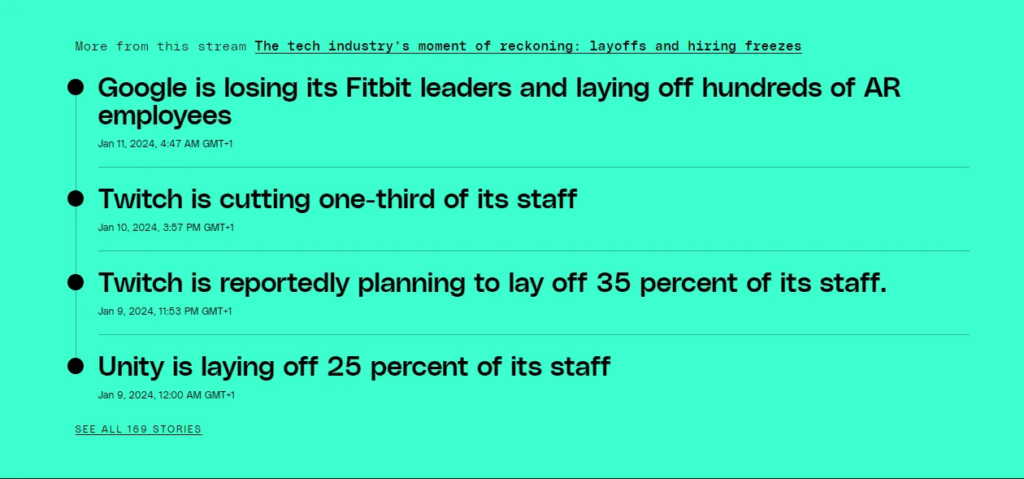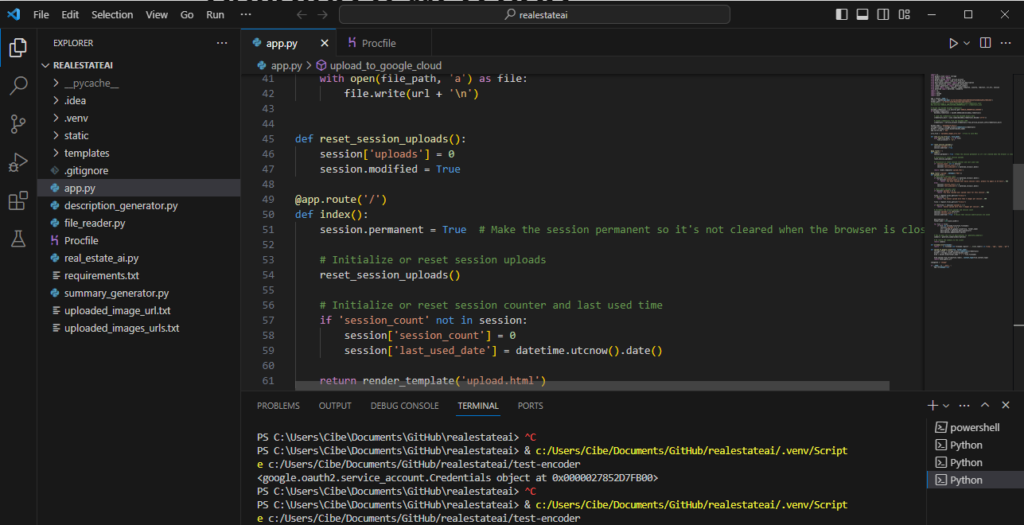A (not so) comprehensive review of the carrier side of the trucking industry
#2 – Little Fires Everywhere / January 2024
We start the new year blushed with excitement. There are so many possibilities, a whole year in front of us. Wherever you go, wherever you turn, you are met with hospitality, more so than in the months leading up to the “big event”. That’s probably because the girl at the supermarket, who smiled a little too hard at you, made it a resolution for 2024 not to be in that job spot two months from now. That is why she’s being extra polite. But she might not have been reading the news lately.
Looking at the tech sector, it can be said that 2024 started with a lay-off trend. First, it was Google, then it was Twitch, and then a few others. I see a similar trend going on in my (logistics) industry – Coyote, Uber and Flexe, to name a few. When I read all of this stuff, the first thing that comes to mind is – there is a lot of new workforce available on the job market, on the one that has been plummeting. This is not the best time to be unemployed in IT; but unemployment is rarely a choice.

2023 was about the discovery of AI, mainly the one belonging to the company OpenAI. It was the year when a lot of regular folks discovered the power of an artificial intelligence model through a chat form. Chat forms are always easy to digest. When we were kids, we would use Wikipedia for all the information we needed. Our kids are going to use AI chatbots such as ChatGPT.
Even though 2023 was an economic hiccup in some sense, the feeling of advancement was prevalent. With OpenAI came all the folks who started making AI wrappers around the aforementioned model, and built whole companies around it; Perplexity, PhotoAI and Chatbase, with the latter two having over $70k MRR (Monthly Recurring Revenue). And these are just a few examples – I’ve seen over 100 companies making over $10k MRR. If that does not sound promising, I don’t know what does.
New technologies allow new opportunities, sure. But the market has become more fierce as well – I am supposed to compete with people who have been building software companies for years? I can try to, and I will do it, but when I look at all that, I say: brick-and-mortar businesses have never been more appealing than now.
Another business trend that I wanted to mention, and that is going to be prevailing in the following years is the pay-per-use business model. We already have too many subscriptions: Netflix, Spotify, Gsuite or other business email, car payments… Any app that allows bonus features has a monthly fee, and if you want to use that CRM app or email marketing app, prepare to take out $20 from your pocket, every single month. Well, that is changing. Google, Amazon, and Azure already hopped on the new trend, and I sense that a lot of other big players are going to do so in the next couple of months. It’s just better – it operates by metering the usage of a product or service and bills the customer at the end of the month. I don’t want to have a sense of wasting my money for not using the product enough – I want to pay exactly as much as I used the thing.
I used to spend a lot of my time searching for a job position that offers the following: it is interesting, it requires a specific set of skills, and is NOT easily replaceable. The main issue I have with my current job is that I am easily replaceable – a newbie with 3-4 months of experience could come, offering to work for half of the salary that I have, and that would be it. That’s what happened with company truck driver jobs in the US. A lot of Latinos and other ancestries migrated to the US and took jobs for less than minimum wage, lowering the $ threshold in the following years for all of the participants in the logistics sector.
But I didn’t know that it was not other people that I should be worried about replacing me – it was these generative AI models that keep improving. We’re now in a phase where most of us can use AI tools complimentary to our jobs, and that will make us lazy, but it will also allow us to do more in the same amount of time. The next phase is job replacement. How many of the current jobs are going to die out because they can be fully automated? 2 to 5 percent? Or is it maybe more?

I wrote about building my own AI wrapper in a previous post, and it was a fun project while it lasted, but I ditched it. I could not build a good business model that would allow steady streams of income, and I was not sure about how big of a budget I would need to kick things off on the marketing side, so I just decided to move to something else.
Since I want to get more familiar with software, I am thinking of building a few small apps, apps that already exist mind you, but that would be simplified and translated in my native language. For example, an online “sign a document” solution.
Maybe that is what I am going to do. It certainly seems more fun than any type of newsletter, because for the last few days, newsletters have been the only project I could think of. And I don’t want to do that – the market’s oversaturated.
Still, with the help of ChatGPT, there’s only so little that I can’t do. At least, that’s what I have to believe if I want to adhere to my “creative process”.
Until next time.
#1 – Playing with ChatGPT, building a web app, deploying on Heroku…
The 2024 has begun. To stay true to my hopes and wishes, I have to use this website as a place where I am going to document my project endeavors. I don’t consider myself an entrepreneur.. yet, but if I earn $ from anything that I do make in the future – I will consider myself worthy of that title.
We began December 2023 with a small project – an AI that generates real estate listing descriptions. The idea was very simple – feed a model with a couple of images, and get a description based off of those. Why I thought it was novel was because, at the time, none of the websites already offering this had the option to upload apartment pictures – all that you could do was describe what you were selling, and select a couple of hashtags related to your real estate.
I wanted to make it different. I wanted to allow photo uploads, and I wanted the model to focus on the materials shown in the pictures, on the natural lighting, and the surroundings.

It took me 13 days to make an MVP. Bear in mind, I have no coding background. In 2019 I did a Udemy course covering some of the Python basics because at the time, I was interested in Machine Learning / Deep Learning. I tried coding as a hobby for about a year, but since I could land a junior job after the year had passed, I dropped that hobby completely.
Four years later, I was back at it. It felt as if I never touched programming – I had completely forgotten most of the stuff I learned. Luckily, this time it was not knowledge I was armed with; no, this time, I had ChatGPT on the side. I decided I would pay a monthly fee for GPT 4 access and start bombarding it with questions daily. If nothing, I would become better at prompting.
Honestly, I thought it would take me at least a month before I could launch an MVP. I decided to focus on the backend, asking for chunks of code from GPT daily and slowly gluing it all together piece by piece. I had no idea how web frameworks worked, but thankfully, I was able to get familiar with that through ChatGPT as well. I want to slowly work you through the whole building process.

First, I needed to draw on a piece of paper the logic behind the website. It all sounded so simple:
- upload a batch of photos to a hosting website, where I would later access the URLs from the uploaded photos
- send URLs of uploaded photos to an AI model that specializes in images
- generate a description of the photos (separated or merged together), save it
- send a description variable back to the AI model, this time specialized in text generation, and ask of it to generate a sales description
- display a result to the user
For image upload, I went with Google Cloud buckets. The dashboard can look daunting to a newbie (which I was), but it was straightforward enough. I had to play around with settings in order to switch from private to public items in the bucket, other than that, everything else was fine.
I chose Microsoft Azure Computer Vision as the first AI model, the one that would read the images, as per ChatGPTs recommendation (the most popular alternatives are Google Cloud Vision AI and Amazon Rekognition). It took me a day and a half just to set up an account and get used to Azure’s dashboard. After that, I started sending the pictures to Azure’s vision AI to produce results.
I know there were a few parameters that I did not tweak in Azure, but in general, I just did not like the results that I was getting, and the descriptions the model was providing. I considered switching to Google’s AI when I realized – why not just use OpenAI’s vision model?
Why not use OpenAI for both image reading and description generation? It seemed like a logical step to take. It would reduce the complexity. And so I did just that.
After a few days of tweaking the prompts for the vision model of OpenAI, and for the real estate description generator model, I had a working project. I added sessions because I wanted to limit how many pictures a single user could upload (otherwise it would be very costly for me), and also, I wanted to limit the description generations per day, per user. The main issue was – this thing was running locally. I had NO IDEA how I could take all of the code and upload it online, make it available as a website.
After more consulting with ChatGPT and Google, I had to make changes in the code (some protected files were stored locally, that needed to be moved to the cloud), and I decided to host it on Heroku. This last part turned out to be harder than expected because I kept getting errors in my code. I had to commit and recommit to GitHub more times than I want to admit.
After 3 or 4 days of hell, I finally got the thing running.

It needed a lot of tweaking, but the main thing is – it worked. Now, it’s been a few days since I got it to work, and I am kind of in a “writer’s block” – I wanted to make the front end pretty, or rather dynamic, but there’s no way for me to do it alone. I tried with GPT, with Google, Youtube tutorials, and I still can’t figure it out. If it was me, I would want my landing page and the generation page to look something in the style of this website:

And hiring someone to do it might cost me a lot. I am not sure if I should ditch the thing completely, or if I should just stick with it, invest in an engineer or two to help me make it seamless, and then later see how I can get users for it.
That’s the main issue – I do not know if there is a market for this thing. I wouldn’t want to put $1000 to $3000 of my own money into it, if I did not get any kind of social proof that someone would use it. And another issue is, I don’t know how I would scale or advertise it. I mean, programming was not my field either, and I got it to work, so I am pretty sure I would figure it out.
As of now, I am not sure what to do. If I decide to get things into motion again, I will write a new post, or update this one. Farewell for now.

